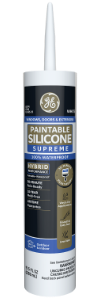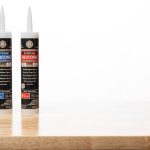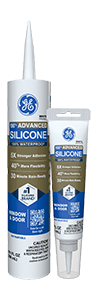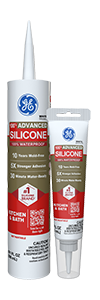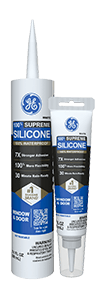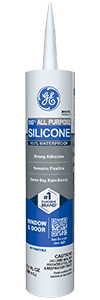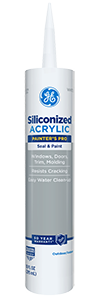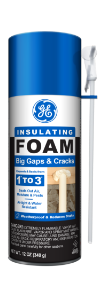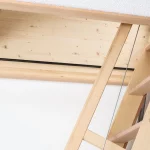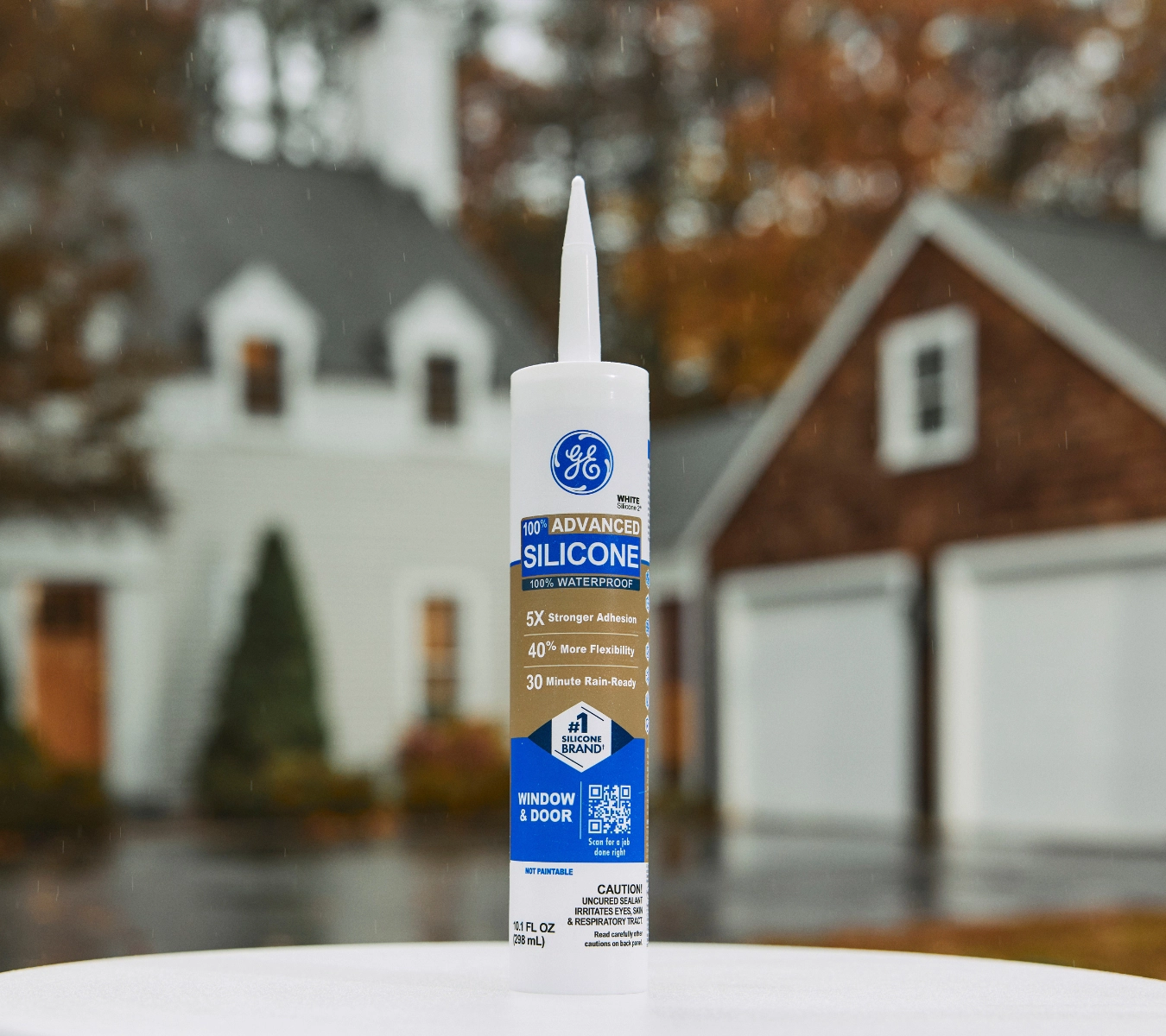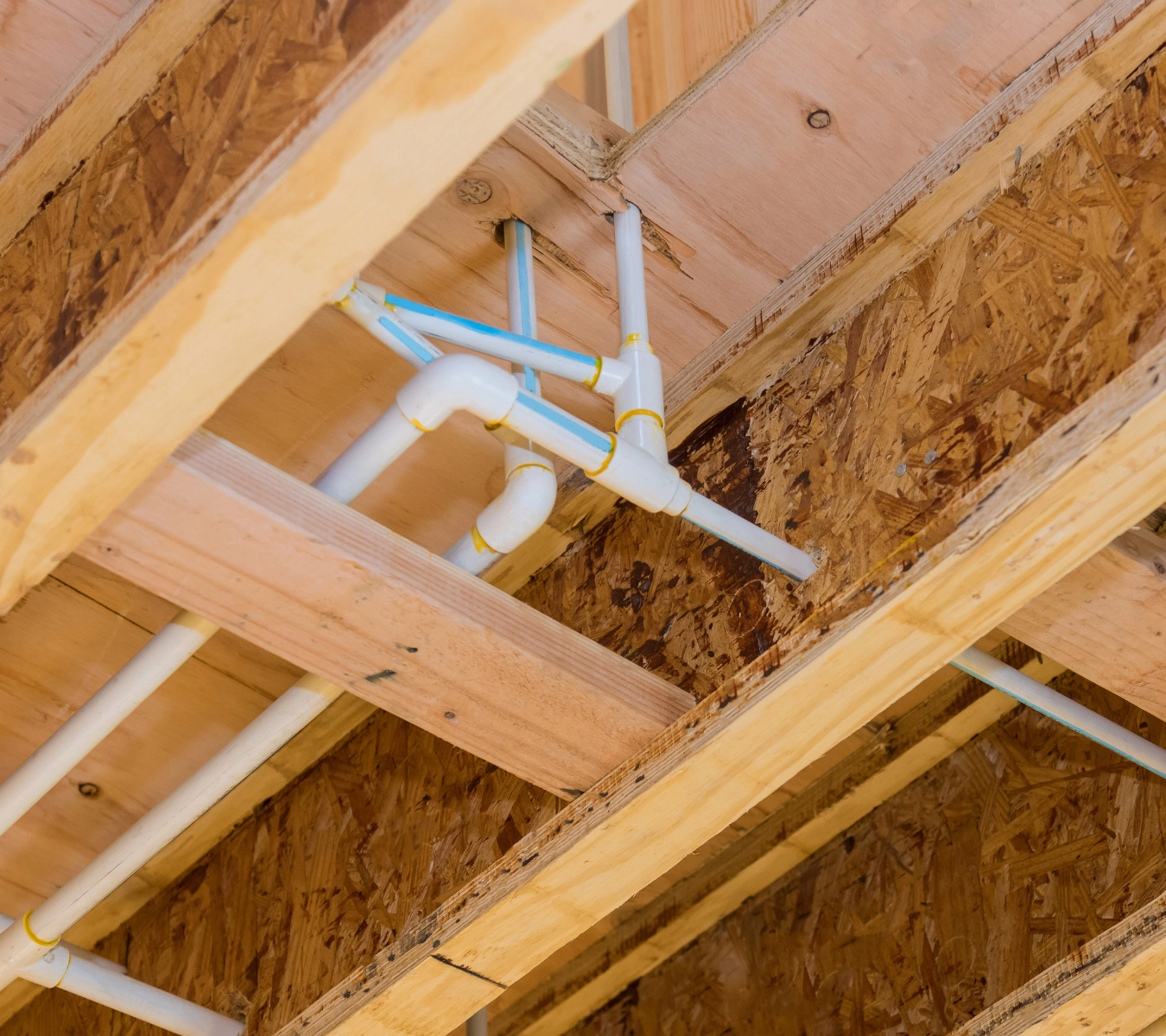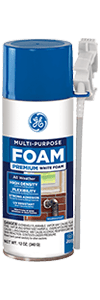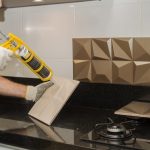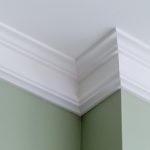Note: This DIY article is provided as a general guide only and is not intended to take the place of product-specific installation procedures; always follow applicable manufacturers’ instructions. Depending on your home’s age and condition, location within the home, and other potential factors, repairs and/or upgrades or other services may be necessary prior to the beginning and/or completion of your project that may involve the services of a home improvement professional. This article does not include advice pertaining to local building codes and/or any related inspections.
Keep your home in excellent shape and save a ton of money with a hybrid sealant.
What is a hybrid sealant?
A hybrid silicone sealant is a premium formulation that combines the superior water resistance of a silicone sealant with the convenience and paintability of an acrylic sealant. Due to their excellent durability and flexibility, hybrid silicone sealants are the go-to option for sealing indoor and outdoor paint projects that may be exposed to rain or water.
GE Sealants offers two types of hybrid silicone sealants— Paintable Silicone Supreme Windows & Door and Paintable Silicone Supreme Kitchen & Bath sealants.
The Kitchen & Bath hybrid sealants are 100% waterproof and ideal for interior paint projects constantly exposed to moisture and humidity. They deliver incredible results when working on paint projects that benefit from a flexible but waterproof seal.
The Paintable Silicone Supreme Window & Door hybrid sealants are ideal for exterior paint projects exposed to water and inclement weather. They’re 100% waterproof, flexible, and quickly rain- and paint-ready.
Hybrid sealant vs 100% silicone sealant
Hybrid sealants combine the strengths of silicone and acrylic sealants. They’re ideal for projects that must be 100% weatherproof or waterproof in a short amount of time. Silicone sealants offer the most extreme flexibility and adhesion and are 100% waterproof, however, they are not paintable like hybrid sealants.
Sealing bathroom tiles
GE hybrid sealants combine the best properties of silicone and acrylic caulk to offer excellent durability and flexibility. They create durable, watertight seals that protect your bathroom from water damage and leaks.
You’ll need:
- A sealant gun
- Paintable Silicone Supreme Kitchen & Bath Sealant
- Utility knife
- Smoothing tool
- Safety gloves and glasses
- Mold-resistant cleaner
A step-by-step guide detailing how to seal bathroom tile with a hybrid sealant.
- Prepare the surface. Use the utility knife to remove old, damaged sealant.
- Clear the debris. Use a stiff wire brush to remove the dust and debris. Wipe down the surface with a mold-resistant cleaner to ensure proper adhesion.
- Cut the nozzle. Use the utility knife to cut the sealant’s tube nozzle at a 45-degree angle.
- Puncture the inner foil seal. Insert the caulk gun rod or a long nail into the nozzle to puncture the inner seal foil.
- Load the caulking gun. Insert the hybrid sealant cartridge into the caulking gun and adjust the trigger for a snug fit.
- Apply the sealant. Apply a continuous bead of hybrid silicone sealant, making sure to overfill the joint slightly.
- Tool the sealant. Use the silicone tooling kit to create a smooth, concave finish while ensuring contact on both sides within 15 minutes of application.
- Leave to cure. Allow the hybrid sealant to cure. The curing time for Paintable Silicone Supreme Kitchen & Bath Sealant depends on the prevailing weather and the bead thickness. Thin beads –less than ¼” thick may be ready for water exposure within half an hour. Thick applications may take 24 to 72 hours to cure fully.
Paintable hybrid silicone sealants from GE Sealants are shrink-resistant, sun-proof, and freeze-resistant and remain permanently flexible after curing. They won’t crack or crumble with time or UV exposure and ship with lifetime guarantees.
Sealing an exterior door frame
Unsealed gaps between your door frame and the siding threaten the home’s durability and integrity. Sealing the gaps with a hybrid silicone sealant improves your home’s insulation while keeping it pest-free.
You’ll need:
- Wire brush
- Sealant gun
- Paintable Silicone Supreme Window & Door sealant
- Utility knife
- Cleaning solvents such as isopropyl alcohol
- Paper towels
- Masking tape
- Caulk tool
- Safety gloves and glasses
Here are steps detailing how to apply hybrid silicone sealant on an exterior door frame.
- Remove the old sealant. Carefully scrape and remove loose or damaged sealant from the door frame.
- Clean the surface. Use the wire brush to remove any sealant residue and wipe down the surface with the solvent.
- Protect the surface. Line the siding and the door frame with masking tape to avoid a messy cleanup.
- Cut the nozzle. Use the utility knife to cut the hybrid sealant cartridge nozzle at a 45-degree angle. An angled cut gives you better control while applying the sealant for a clean, professional finish.
- Pierce the inner foil seal. Use the caulk gun rod or a long pin to puncture the sealant’s inner foil. Swivel the rod at the top of the sealant gun and insert it inside the tube’s nozzle. Hybrid sealants from GE Sealants ship with an inner foil to safeguard against moisture.
- Load the sealant gun. Insert the cartridge into the caulking gun and adjust the trigger to fit the tube.
- Seal the joint. Hold the sealant applicator at a 45-degree angle to the joint and apply a continuous bead of the hybrid sealant between the door frame and the siding. Start from the top and work your way to the bottom. Apply as much sealant as you need to fill the gaps.
- Tool the bead. Use the caulk tool to create a neat, even finish within 15 minutes of application.
- Leave to cure. Leave the sealant to cure. The cure time of Paintable Silicone Supreme Window & Door Sealant depends on the bead size and prevailing weather conditions. If the bead size is less than ¼”, it can be water-ready within 30 minutes and paintable within an hour. Thick application may take 24 to 72 hours to cure fully.
Home repairs and much more. GE Sealants provide superior and durable bonding in any home improvement projects you undertake.


